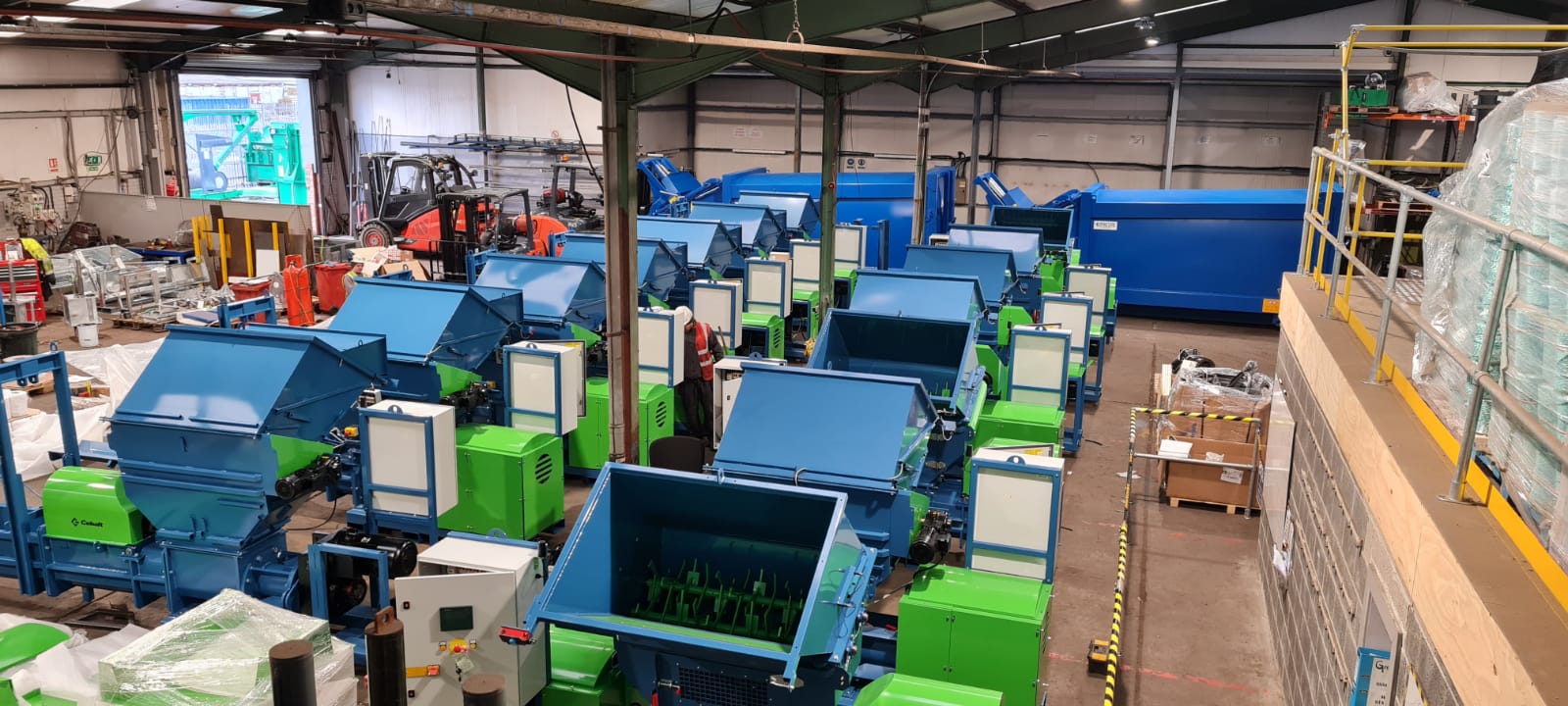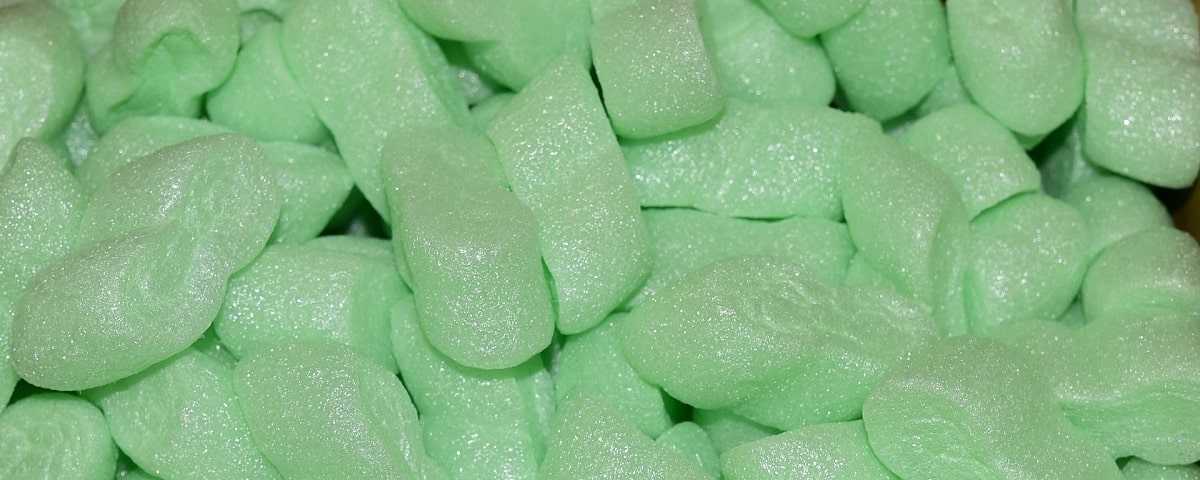At Greenbank, we prioritise safety when it comes to operating polystyrene compactors. Hence why we provide an operation and maintenance manual with every purchase of our machinery to ensure safe and efficient use of our equipment.
Operating a polystyrene compactor requires careful attention to safety protocols. These machines are designed to efficiently compact polystyrene waste, improving your business’ waste management and environmental sustainability. However, without proper understanding and adherence to safety guidelines, risks can arise.
This article will provide a step-by-step operating procedure for a polystyrene compactor, including pre-operation checks, loading instructions, and ongoing monitoring.
Polystyrene Compactor Safety features
Polystyrene compactors, such as the SC1200 model, have several key safety features which include the following:
1) Main Isolator/Main Switch
These machines can be disconnected from the mains supply by means of the main isolator switch which can be found on the door of the main panel.
It’s essential that the switch be set to the OFF position and secured with a padlock when cleaning, maintaining or inspecting the machines. To padlock the switch, extend the handle and affix the padlock through the opening.
2) Emergency Stop Switches
In case of immediate danger, the machine can be shut down immediately by pressing one of the Emergency Stop buttons. The Emergency Stop is located on the Main Panel.
In order to release after the fault has been cleared, the switch must be twisted as indicated on the Emergency Stop button.
3) Safety Switches
All of our polystyrene compactors come equipped with safety switches. These interrupt the power supply to stop the machine when a door or cover is opened. All doors and covers must be secured before operating the equipment.
4) Safe Reach Distance
Another notable safety feature of polystyrene compactors is the implementation of a safe reach distance. These machines are intelligently designed to ensure that the operator is always kept at a safe distance from the moving parts during operation.
The incorporation of a safe reach distance in polystyrene compactors is just one example of how Greenbank and our manufacturer Cobalt goes above and beyond to prioritise operator safety. When choosing a polystyrene compactor, you can have peace of mind knowing that your well-being is a top concern and that every effort has been made to create a secure working environment.
Safe Operation of a Polystyrene Compactor – Step by Step
Operating a polystyrene compactor requires a systematic approach to ensure safe and effective use. By following these step-by-step procedures, machine operators can minimise risks and maximise productivity. Let’s dive into the operating procedures for a polystyrene compactor:
1. Power-Up and Safety Checks:
- Begin by plugging the compactor into the power supply.
- Turn on the isolator and turn the key switch to power up the machine.
- Check the machine and its surroundings for any potential hazards or obstructions that may pose a safety risk. Ensure the area is clear and safe for operation.
- Release the emergency stop buttons to prepare the machine for use.
2. Loading and Preparation:
- Load the polystyrene material into the loading hopper.
- Press the “Reset” button to see if the system requires a reset or if any faults are detected in the drive system. The blue “RESET” light will illuminate if necessary.
- Press the green “Start” button to initiate the compaction process. The green “RUNNING” light will illuminate, indicating that the machine is operational. It will run for approximately 3 minutes.
3. Monitoring and Adjustments:
While the machine is running, regularly monitor the following points:
Amp Usage: Ensure the machine is not running above the recommended 16 amp limit. If it exceeds the limit, release pressure in the jaw section by turning the handle anticlockwise gradually. This will lower the amp usage.
Material Movement: Confirm that the compacted material is continuously moving out of the jaw section. If it becomes stagnant, release pressure in the jaw section by turning the handle anticlockwise slightly. This will initiate movement and reduce amp usage.
Crushing and Compaction: Verify that the material is being crushed and compacted effectively. If the material is not breaking up or compacting properly, open the front door and rearrange the product within the hopper to ensure proper engagement with the crusher. Insufficient crushing or compaction may cause the block to stop moving and potentially melt the material in the compaction chamber.
Optimum Compaction: Different polystyrene types have varying weights. Gradually increase the pressure by tightening the hand screw quarter of a turn at a time until you achieve the optimum level of compaction. The compacted block should be solid, hold together well, and show no signs of melting.
4. Ending the Cycle:
If you need to stop the machine before it automatically completes the cycle, press the “Stop” button to halt its operation.
By following these operating procedures, you can ensure the safe and efficient use of a polystyrene compactor. However, safety should not be limited to operating procedures alone. In the next section, we will discuss important safety guidelines that should be followed during the operation and maintenance of a polystyrene compactor.
Safety Guidelines for Polystyrene Compactor Operation
Ensuring the safety of operators and maintaining a secure work environment is paramount when operating a polystyrene compactor. By adhering to the following safety guidelines, you can minimise the risk of accidents and promote a culture of safety:
Training and Authorisation:
Only allow trained personnel who have been authorised to operate the polystyrene compactor. Proper training ensures that operators are familiar with the machine’s functionalities and safety protocols. Maintain a log detailing the authorised personnel who are qualified to operate the equipment. This helps track and verify the individuals responsible for operating the compactor.
Electrical Safety:
Polystyrene compactors are powered by single or polyphase electrical supplies rated at 230-400V AC. Never remove covers or guards or interfere with the equipment’s electrical connections. Exposure to live connections can result in severe injury or even death.
Regular maintenance and inspection should be carried out to ensure that all electrical components are in proper working order.
Pre-Shift Inspections:
Before each shift, operators should conduct visual and functional inspections of the polystyrene compactor. Check for any faults or irregularities that may affect safety or performance.
If any faults or irregularities are detected that could increase the risk to the operator or property, the machine should be immediately shut down and removed from service until the machine is serviced by a Greenbank engineer.
Hazard and Safety Labels:
Polystyrene compactors are equipped with hazard and safety warning labels. These labels contain important information and instructions that should be observed by all operators. Make sure that all staff are aware of the warning labels and understand their significance in maintaining safety standards.
Personal Protective Equipment (PPE):
Operators should wear the appropriate personal protective equipment, including safety glasses, gloves, and any other gear recommended in the safety guidelines.
Final Thoughts
Safety should always be the top priority when operating a polystyrene compactor. By following the provided guidelines and ensuring that operators are well-trained and aware of safety protocols, you can minimise the risk of accidents and create a secure work environment.
At Greenbank, we are committed to providing not only high-quality polystyrene compactors but also comprehensive support for safe operation. With every purchase of our machinery, you receive an operation and maintenance manual that serves as a valuable resource for understanding the machine’s functionality and safety guidelines.
Remember, safety doesn’t stop at operating procedures. Regular maintenance and inspections are essential to keep the polystyrene compactor in optimal working condition. By adhering to maintenance schedules and addressing any issues promptly, you can ensure the longevity and reliability of your equipment.
Explore our range of polystyrene compactors and discover how we can assist you in achieving safe and efficient waste management solutions.
Recommended Machinery:
Recommended Guides:




